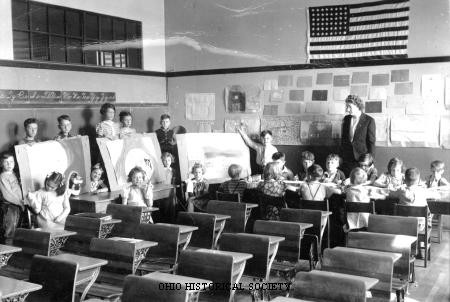 http://fe867b.medialib.glogster.com/media/3f/3fb2381a75afc8468f22210ff9c796a0b8940f9bdd9e2884a32cde0e122e4f32/1143.jpg
http://fe867b.medialib.glogster.com/media/3f/3fb2381a75afc8468f22210ff9c796a0b8940f9bdd9e2884a32cde0e122e4f32/1143.jpg
Introduction
The number of students being educated was steadily growing in the first part of the twentieth century, but the Great Depression presented many challenges for students, teachers, and schools. During the Depression, many schools faced budget cutbacks, forcing them to come up with creative ways to keep schools running or close their doors altogether. Although education was highly valued by Americans prior to the 1930’s, the limited amount of funds changed the way many Americans thought about education ? it was a luxury that could not always be afforded.
Public Schools in the Great Depression
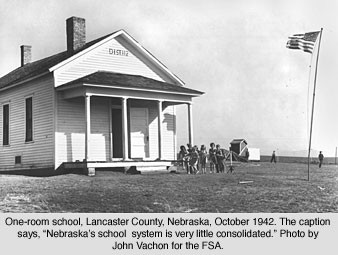 http://www.livinghistoryfarm.org/farminginthe30s/life_22.html
http://www.livinghistoryfarm.org/farminginthe30s/life_22.html
During the 1930?s, the public education system was not as highly regulated as it is today. Students often did not attend school for nine months of the year as they do in today?s schools, as different county or local school systems often operated for different lengths of time. Most students during this time period also did not attend kindergarten or 12th grade. One room schools, in which one teacher taught all grade levels in a single classroom, were still common, especially in rural areas.
The effects of the Great Depression on schools began in 1932, prompting budget cutbacks that led to reductions in school hours, increased class sizes, lower teacher salaries, and school closings. Schools and districts had to be creative in saving funds; some got rid of cafeterias, cut courses like music, foreign language, and sports programs, or stopped providing school supplies to students.
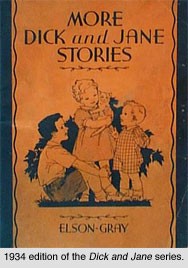 http://www.livinghistoryfarm.org/farminginthe30s/life_21.html
http://www.livinghistoryfarm.org/farminginthe30s/life_21.html
Young people began to stay in school longer as employment was increasingly hard to find, resulting in more students seeking an education in under-resourced schools. Teachers struggled to teach undernourished children whose families were struggling with unemployment. Despite these challenges, the 1930’s were a ?vibrant time for literature for both young people and adults.? Some examples of this literature were Dick and Jane readers, Nancy Drew, Dr. Seuss, Ernest Hemingway, Wallace Stevens, Agatha Christie, Richard Wright, John Steinbeck, and more.
Data
General decrease in students age 7?13, by Oklahoma county. Data from: University of Virginia Library, Historical Census Browser.
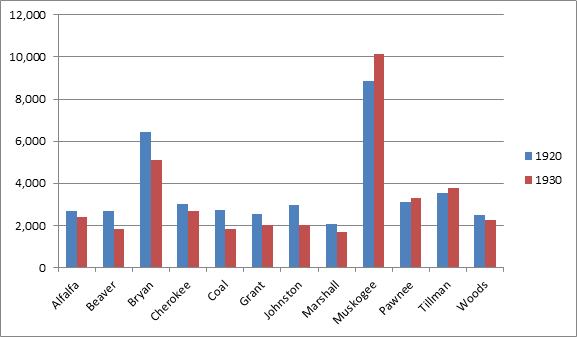 Mixed increase (somewhat surprising amount) and decrease in students age 14?15, by Oklahoma county:.
Mixed increase (somewhat surprising amount) and decrease in students age 14?15, by Oklahoma county:.
Because of the worsening economy, especially that of the youth labor market, many teenagers returned to school. By 1940, nearly three-quarters of 14?17 year-olds were attending high school.
Students age 14?15, by Oklahoma county. Data from University of Virginia Library, Historical Census Browser.
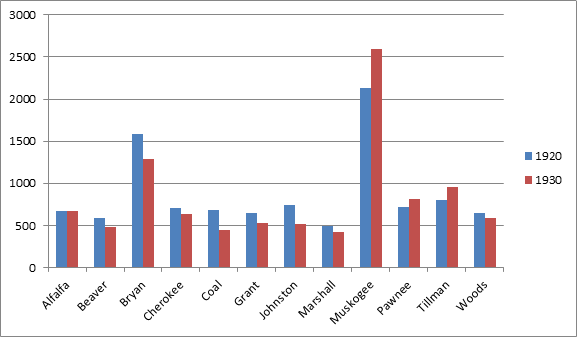
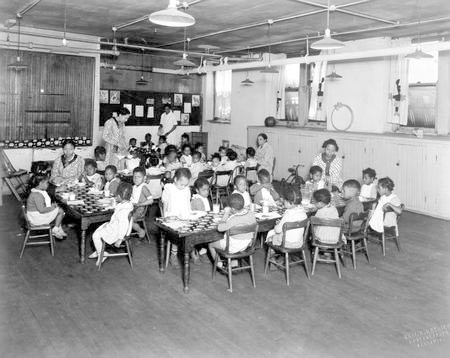 https://cookconnected.files.wordpress.com/2013/04/children-literacy.jpg
https://cookconnected.files.wordpress.com/2013/04/children-literacy.jpg
Segregation in Schools
Segregated schools were common during the 1930?s. Although separate schools for black and white children were required under the law to be ?separate but equal,? the buildings, classroom supplies, books, and the treatment of students and teachers were most often unequal. Schools for black children received less money, were sometimes given discarded books from white schools, and had to make do with lower quality buildings and facilities. Few black schools offered standard high school programs, and teachers often suffered from lack of training facilities and lower salaries.
Other minority groups also experienced segregation in schools. In the 1930?s, Cherokee children often attended missionary schools that frequently required them to speak English rather than their native language. Teachers sometimes also tried to move students away from their traditional beliefs. This angered many Cherokee families, prompting some New Deal-era legislation that began to provide alternative programs that would not erase native heritage.
Students with visual, hearing, or physical disabilities also faced segregation, with many having to attended boarding schools far away from home. Educational opportunities for students with mental disabilities were severely limited, which meant that these students often were not able to attend school at all.
The Dust Bowl
The Dust Bowl presented specific problems for rural schools, like the one Billie Jo attends in Out of the Dust. In the 1930’s, there was a general decrease in school support due to the falling of property taxes, which was caused by the decreased value of farm land. Rural school districts especially struggled to support the schools and pay their teachers.
Children whose families farmed for a living often had a more difficult time attending school, as they might have to miss school at planting time or harvest. Teenagers often had to quit school in order to help with the family farm, or leave home to find non-agricultural jobs. Children of tenant farmers, sharecroppers, and migrant workers had even greater trouble, as they often had to change schools when their parents moved to find work and housing.
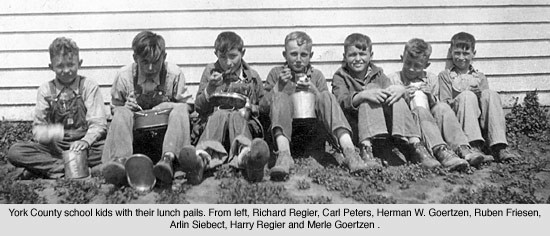 http://www.livinghistoryfarm.org/farminginthe30s/life_22.html
http://www.livinghistoryfarm.org/farminginthe30s/life_22.html
Herman Goertzen was one of many who left school to help on the family farm. His father?s pneumonia meant that it was Herman?s job to ?keep the farm running during the winter, especially. ? It was my job to stay home, and it wasn?t that important to go to ? school after eighth grade.?
Students were often sent home from school because of the dust storms, remotely like the snow days of the current age. This, in and of itself, presented a problem, as teachers worried that the students would lose their way on the walk home. The dust was such that the middle of the day would be completely dark, ?like a huge curtain had been drawn around [the school].? Lanterns were sometimes lit so that students could continue with their lessons, and sometimes students were kept at school overnight so that they wouldn?t get lost on their way home or ?be overcome by the dust.?
Lasting Effects
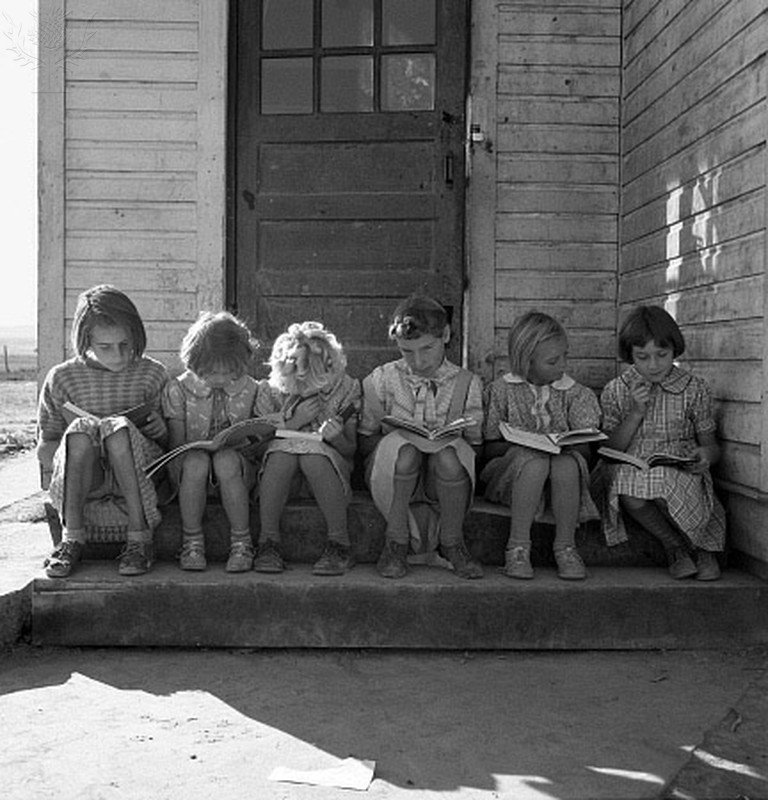 https://cookconnected.files.wordpress.com/2013/04/children-literacy.jpg
https://cookconnected.files.wordpress.com/2013/04/children-literacy.jpg
Despite presenting many challenges to education, the Great Depression actually led to some lasting positive changes in the US educational system. The portion of school budgets from state funds increased, school systems became more efficient by combining small schools and standardizing curriculum and school facilities, and teachers fought for and won higher standards for the teaching profession. In the mid-1930’s, the National Association for the Advancement of Colored People (NAACP) also challenged school segregation in a number of court cases.
Sources
http://www.history.com/topics/black-history/brown-v-board-of-education-of-tope
http://ncpedia.org/public-schools-great-depression
http://ic.galegroup.com/ic/uhic/ReferenceDetailsPage/ReferenceDetailsWindow?query=&prodId=UHIC&displayGroupName=Reference&limiter=&disableHighlighting=true&displayGroups=&sortBy=&zid=&search_within_results=&action=2&catId=&activityType=&documentId=GALE%7CCX3468301121&source=Bookmark&u=sand55832&jsid=55d9d90c4bad282ee2debc3c18227fed
http://www.encyclopedia.com/article-1G2-3424800021/education-1929-1941.html
http://www.livinghistoryfarm.org/farminginthe30s/life_21.html
http://www.livinghistoryfarm.org/farminginthe30s/life_22.html
http://www.livinghistoryfarm.org/farminginthe30s/water_04.html

